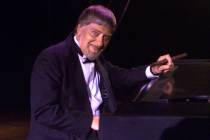Cleveland Orchestra brings fresh concept to world-class sound
In 1958, the Cleveland Orchestra and Chicago Symphony joined the orchestras of Boston, New York and Philadelphia to form the group informally known as the Big Five, American musical forces comparable to any of the world’s great ensembles. On Saturday, the Cleveland Orchestra, under music director Franz Welser-Most, demonstrated why it still belongs in such august company.
This orchestra is truly world-class. Its sound is rich and full, abetted by the splendid acoustics in Reynolds Hall. Welser-Most has continued the tradition of his distinguished predecessors by retaining the identifiable “Cleveland sound” while bringing a fresh concept of ensemble playing featuring exceptionally subtle dynamic interrelationships, especially within the strings.
Saturday’s program began with Beethoven’s Violin Concerto in D Major, with the brilliant Danish virtuoso Nikolaj Znaider as soloist. Znaider’s playing was not bombastic nor overly showy; instead it was graceful – even elegant – and was perfectly matched in style by the orchestra, which served more as partner than mere accompanist.
The first movement begins with five soft strokes on a kettledrum establishing a rhythmic motif, a sort of theme, that prevails throughout the movement. Znaider’s journeys into the upper register were beautifully controlled. The second movement could only be called sublime. It led without pause into the third and final movement, a jolly, almost playful romp .
Following intermission, we heard a work by contemporary English composer Thomas Ades: “Dances from ‘Powder Her Face.’ ” The opera has met with severely mixed reviews because of the prurient nature of both staging and text that involves an English duchess, shamed by her sexual pursuits.
The “Dances” excerpted from the score are angular and self-consciously dissonant, often atonal. The work is technically demanding. It asks a lot of the players, but seems not to offer much to the audience in return except awe at the technical mastery it demands. The “Dances” alone offer pyrotechnics but not much else.
The evening’s final offering was Bedrich Smetana’s “Three Symphonic Poems” from “Ma Vlast” (My Country). Seldom heard in its entirety, “Ma Vlast” consists of six tonal portraits of Smetana’s Bohemia, a statement of the composer’s love for, and pride in, his native land. Three of those portraits comprise the “Symphonic Poems.”
Of these, the best known and most frequently heard is “The Moldau,” a vivid tone painting of one of Europe’s great rivers from its origin in the merging of two bubbling springs, to its diverse journey through the Bohemian countryside and its culmination in a vista of breadth and power. Welser-Most chose tempos faster than are usually heard but still portrayed the work’s sweeping force.
“Three Symphonic Poems” began with “The Mighty Fortress” depicting a stronghold on a hilltop overlooking Prague. The structure has crumbled and now is a serene cemetery where Smetana is buried. The third poem, “Sarka, the Warrior Maid,” is not a landscape but a musical depiction of a rather gory, blood-bathed folk tale.
Throughout the Smetana work, the orchestra was in its glory: expressive, forceful and expansive.
There were some distractions caused by late-comers being held too long before being seated between movements and by chairs scraping the floor in the parterre and other boxes. Perhaps rubber tips on the chair legs would reduce that minor annoyance. But those items pale before the exquisite pleasure of hearing this world-class orchestra in perfect partnership with its world-class conductor.
REVIEWWhat: The Cleveland Orchestra
When: April 21
Where: Reynolds Hall, Smith Center for the Performing Arts
Grade: A


















